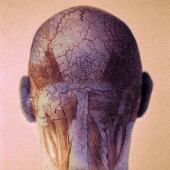
FRIDAY, May 28 (HealthDay News) Researchers say ultrasound can successfully spot patients at risk of having either a stroke or a “mini-stroke” due to a narrowing of the carotid artery – the main vessel in the neck that brings blood to the brain.
The finding could help doctors more easily identify patients whose otherwise undiagnosed carotid blockage could, in fact, be relieved through a standard surgical procedure, known as an endarterectomy.
Discussion of the potential benefit of ultrasound screening is presented online May 28 by a team led by Hugh Markus of St. George’s University of London, in advance of publication in the June print issue of The Lancet Neurology, and is also slated for presentation this week in Barcelona at the European Stroke Conference meeting.
Although an endarterectomy is a risky operation that can itself prompt a stroke, the authors note that when successfully performed, the procedure does in fact reduce the risk for stroke by up to 75 percent among patients who display symptoms of arterial narrowing.
However, whether or not surgery is the optimal treatment for the blockage known as “carotid stenosis” in patients who display no symptoms has been an open question, given that many can best benefit from non-surgical options such as lifestyle changes.
To see whether ultrasound could spot symptom-free patients who would be good surgical candidates, Markus and his colleagues focused on 482 such patients from health facilities all over the world whose arteries had narrowed by at least 70 percent.
Every six months over an 18-month period, one-hour ultrasounds were administered to detect small blood clots and plaque related to arterial narrowing. Stroke incidence was tracked for two years.
The study authors found that those patients identified by ultrasound to have had such clots and plaque were 2.5 times more likely to experience a stroke or mini-stroke (also called a transient ischemic attack), and determined that the procedure was effective in identifying both low-risk and high-risk patients.
The researchers concluded that ultrasound, which is a noninvasive and inexpensive technique, “might be a useful risk predictor for identifying those patients who might benefit from intervention with carotid endarterectomy.”
More information
For more on stroke risk, visit the American Heart Association.

